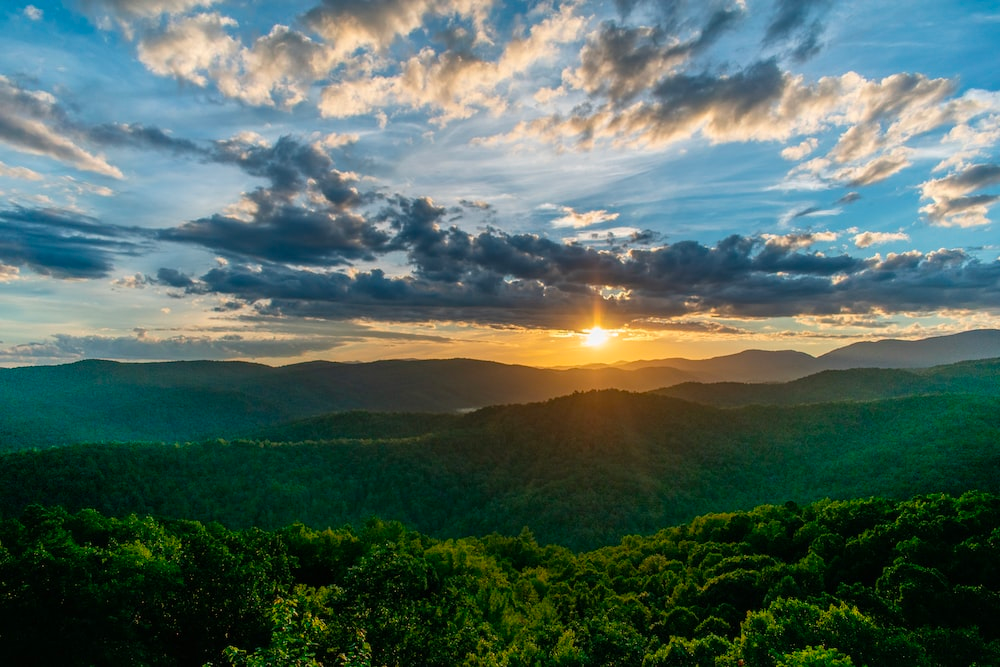
Grace Hollis
035
Why do so many hikers disappear on the Appalachian Trail annually with no trace?
Intro
The Appalachian Trail spans over 2,200 miles and winds through 14 states in America. The trail will take through hikers five to seven months to complete and the success rate falls at about 25%. Despite the large number of hikers who attempt the trail, the access to resources, information, and safety is severely limited. Ranging from natural to supernatural, there is a crucial need for the United States National Park Service to implement more safety measures to protect hikers.

Mt Washington (Eigenbrot)
The Natural Dangers
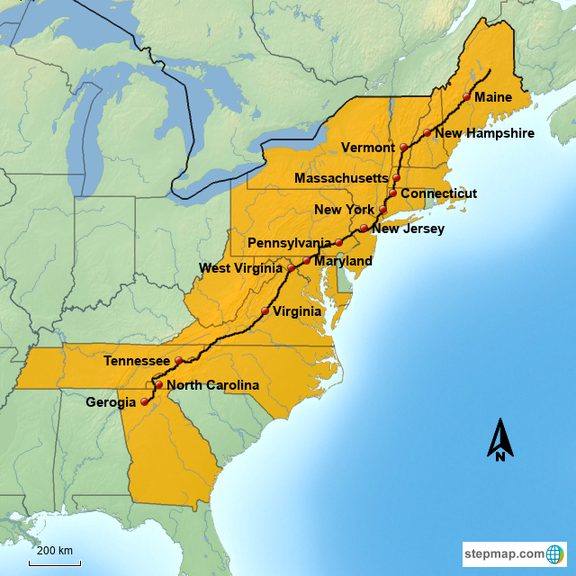
The Appalachian Trail poses many dangers due to the isolation and the rugged terrain. Acclaimed researcher describes the trail as "...challenges hikers constantly with bone wearing ruggedness" (Bratton, 26). The trail can be broken into three geographical sections to better understand the terrain.
Sections of the Trail
The Southern Appalachians
The Middle Atlantic States
New England States
The Southern Appalachians
(Eigenbrot)
Hikers quickly lose motivation in the first section of the trail
The southern portion of the AT gives hikers a real taste about what they will expect during the trek. Blisters and sprained ankles affect hikers within the first fifty miles and thirty to forty percent of hikers will drop out before reaching North Carolina (Bratton, 29-30).
Natural Factors
Winds on the AT have been recorded at record breaking numbers reaching 231 mph (Bratton 30). The trail remains very isolated from nearby civilization and towns. In many areas to reach town to gain access to food, water, and needs hikers must hitchhike or walk several miles. In doing so, there is a greater risk of becoming lost or exposing one self to greater danger on the trail. While these towns are described as the 'Appalachian Empire' they are very small and provide just the necessities.
Increase Resources
With the terrain and exhaustion hikers are experiencing, one may expect for hikers to quit or drop out. Since this feeling of defeat is so common, the increase in resources and research along the trail would greatly improve success. Even implementing safer, more equipped rest stops for hikers to gain composure will improve standards on the trail greatly. Even if a hiker does not wish to utilize extra resources while on the trail, they will be available in case of emergency.
The Middle Atlantic States
Traveling through history
As hikers continue their journey through the AT, they face the Middle Atlantic States. The Middle Atlantic States are home to historic importance such as battle grounds of the Civil War and old coal mines. Due to the nearby cities, such as Philadelphia, there is a bit more access to civilization and paved roads.
No breaks Yet
Despite the lower elevation, hikers will still be climbing roughly 1,000 ft inclines across rocky top mountains. On top of the difficulty through hikers will experience extreme fatigue on the heels, knees, and joints. The Middle Atlantic states are also at extreme risk to Lyme Disease which can quickly shorten a hiker's journey (Bratton, 34). With all of these factors, a hiker may be discouraged quickly from completing the trail. Just through two thirds of the journey
Park Service Stepping in?
In leu of resources such as safe sleeping areas, regulated camp sites, and safe access to food and water, the Park Service has updates the trail along the Middle Atlantic States. In New Jersey, the US Park service has constructed a boardwalk through the wetland surrounding Pochcuk Creek which provides hikers with a safe and accessible way to explore the wetland habitat (Bratton, 35). While this step is important in providing hikers with a safe trail, this is just the minimum. Including safe walk ways and additional resources throughout the entire trail will greatly improve how hikers experience the rich nature of the AT.
New England States
Unpredictable weather
New England states mark the last stretch of the trail. Many blizzards and extreme weather can plague this portion of the trail increasing the level of difficulty significantly. In one case a hiker was traveling the trail in March and had to be rescued via helicopter to escape a dangerous snow storm. Upon her arrival back to the trail in New Hampshire, the slippery and icy mountain tops caused the young hiker to slip and break her leg in three places (Chaplin). The necessity to pack extra clothes and supplies to prepare for any possible weather not only adds to exhaustion but increases how long the hike may take. Park Service saved this woman, however in many areas of the New England States there are not an abundance of resources. Main is described as the most isolated portion of the trail with the least amount of resources. This isolation is why the need for extra supplies and help from Park Services could potentially save lives and reduce the number of injuries from the unpredictable weather (Bratton, 37).
Resources in the New England States
Due to the reasons discusses above, Park Services has implemented a full service hut system which provides meals and beds to hikers (Bratton, 37). This is a huge step in providing safety to hikers and this displays that access to resources greatly improves the quality of the hike and the safety to hikers. Unfortunately, this small stretch of resources does not extend into the "Hundred-Mile Wilderness" where many hikers who were unable to stock up on supplies are hungry, out of resources and attempting the most rugged and difficult portion of the trail, Mount Katahdin (Bratton, 38).
Mount Katahdin
Missing Persons Cases
The natural and physical danger of the Appalachian Trail are a contributing factor to the disappearances that occur along the trail. However, that is just one portion of the issue. There is a lack of cell service, police response, and general safety along the trail which contributes to these disappearances, with no trace.
Missing persons cases
Geraldine Largay
On July 13, 2013 Geraldine Largay disappeared on the AT after attempting to hike the trail over a six month time period. Due to the lack of resources along the trail, to use the bathroom Largay had to go off trail. After doing so Largay was lost and could not make her way back to the marked trail.
Largay tried to contact her husband when she went missing but due to lack of cell service none of her texts went through and lost her GPS tracker. After not hearing from Gerry, Largay's husband contacted authorities where an official search effort was conducted including aircraft, state police, national park rangers, and fire departments searched (Strange Outdoors).
It took law enforcement over two months to locate Gerry's body, and once she was found she was just very close to a nearby campsite. Gerry was found inside a sleeping bag with a flattened tent and green backpack (Strange Outdoors). Gerry was also found with a journal that detailed her life while she was missing and law enforcement gauge that she lived for about 28 days before sadly passing away. Gerry wanted her family to have closure about her death, but how did it take over two years to find Largay after her disappearance?
The sad story of Gerry Largay displays the lack of resources and proper response to a tragedy like Largay. Had Park Service and law enforcement been better equipped to search the rural areas of the AT, Largay could have been found sooner possibly alive. Park Services could also begin to implement better cell service to portion of the trail that are close to towns, like where Largay went missing, where infrastructure is already available. In doing so, Park Services could make contacting friends and family significantly easier preventing disappearances. However, no such efforts have been preformed yet.
Missing persons cases
The Lady in the Lake
In March 2000, fisherman spotted a women's nude body in a lake in the Appalachian Trail. After law enforcement was contacted and a sketch was produced, however her body was in the water for about a month (WBIR). Law enforcement does have some ideas to cause of death, but there is currently no evidence or leads on the woman's identity nor killer.
In twenty three years no one has claimed this woman or have any details on what could have happened to her. With better research or resources along the trail there could have been witness or people to help this woman. I believe that yes, local law enforcement has done all they could for this case, but better response from Park Services could potentially solve this case and prevent something similar from happening.
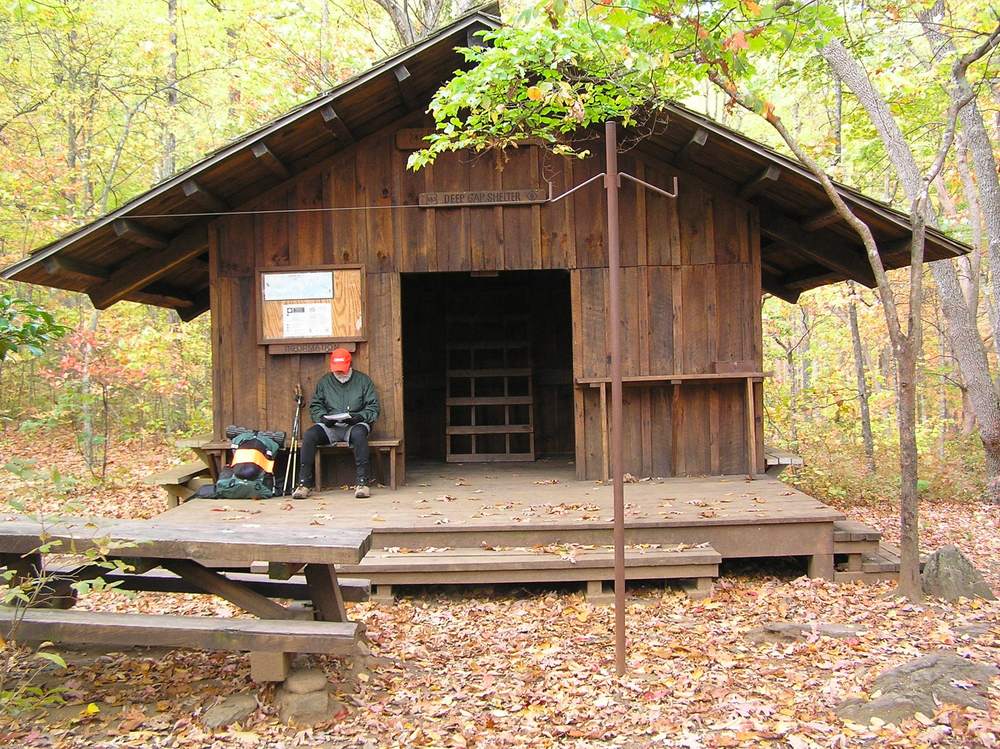
Primitive Hut
Park Service Responses
The Appalachian Trail Park Services has maintained over 250 Primitive Huts along the trail (Miller). These huts are maintained by the Park services which obviously takes a lot of funding due to the historic nature of the huts. The huts were built in the 1930s and the architecture is what the park service wants to preserve along the trail (Miller). There is clearly funding available to the trail to preserve the history of the trail.
While the history and architecture of these huts are very important to the trail, this funding could be utilized to make new huts/campsites open to through hikers for shelter.
In Southwestern Virginia there was a fatal stabbing that killed a 43-year old man in 2019 (Chávez). In wake of the events Park Service did not respond nor increase safety measures along the trail. Instead the non-profit, Appalachian Trail Conservancy, has updated their website and information to provide resources to hikers especially in rural areas of the trail.
Currently along the Appalachian Trail there is just one full time officer assigned to the 2,200 mile trail who is employed by US Park Services (Chávez). With just one officer watching and protecting the entire trail, this leaves hikers very vulnerable. In wake of these events, the National Park Service has not updated nor made safety information easier to access for hikers, and the information provided on the website just includes bear sighting warnings. The phone number to 911 is at the very bottom of the page, which is lacking in accessibility especially in dire situations.
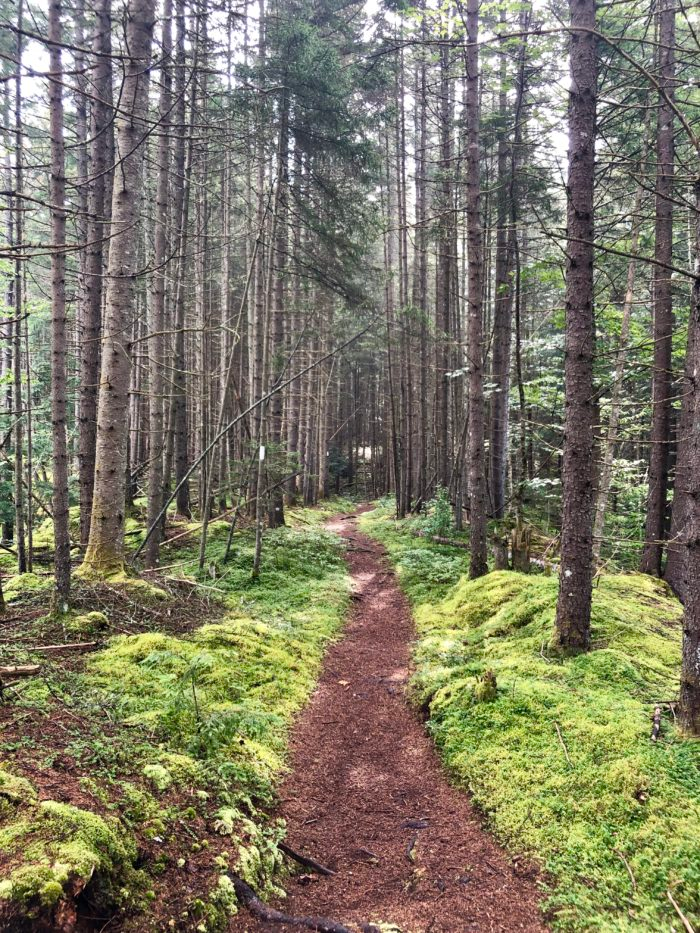
In the year 2018, there was over 170 recordable incidents which ranges from vandalism to assault (Chávez). Despite the large number of criminal attacks that occur on the trail, Park Services did not update their website nor make any efforts to improve safety. Increasing the number of police officers assigned to the trail or even updating the website would greatly improve safety. With three million people traveling the trail, there is great reason to improve safety standards by Park Service.
Folklore and Superstitions
Moth Man
The Moth Man lure originated in 1966 when a couple reported seeing a "large flying humanoid with a 10-foot wingspan and glowing red eyes following their car" (Lewis). Following the event, several other sightings of a similar creature were reported but law enforcement said the creature was a large bird.
Still famous to this day, there is a Moth Man Festival and museum in Point Pleasant where the original sighting occurred.
Erwin, TN
Common Superstitions
- Never close a knife you didn't open or you'll have bad luck for seven years.
- If your nose is itching, it means company is coming.
- Hang a mirror by the door to protect against evil.
- Never leave a rocking chair rocking, or you will invite spirits.
- If you hear your name, no you didn't.
(Lewis)
The Moon-Eyed People
A group of people called the Moon-Eyed People are believed to be living somewhere in the Appalachian Range.
They are described as "pale-skinned humanoids" who are short, stout with beards and blue eyes (Lewis).
Originally 'found' in the 1800s there is museums with sculptures of these people where the Cherokee folklore lives on.
How does folklore and superstitions affect hikers?
As previously discussed the 2,200 mile trail which can take through hikers anywhere between 5-7 months to travel. The physical nature of the trail creates a great deal of exhaustion on the body which poses the risk of hallucinations, increased anxiety, and hysteria. All of these factors may lead the hikers to believing in superstitions and falling into the trap Appalachian folklore.
The US Park Service could provide extra resources on the folklore and superstitions to their page. While not as important as improved safety measures, providing information and resources about the lore of the trail will allow hikers to be aware of the mystery but not fall victim to danger as a result.
Call to Action
There are several factors that contribute to deaths, disappearances, and injuries that occur along the Appalachian Trail. The complete lack of resources for safety and research by the National Park Service is a leading cause of the danger to hikers.
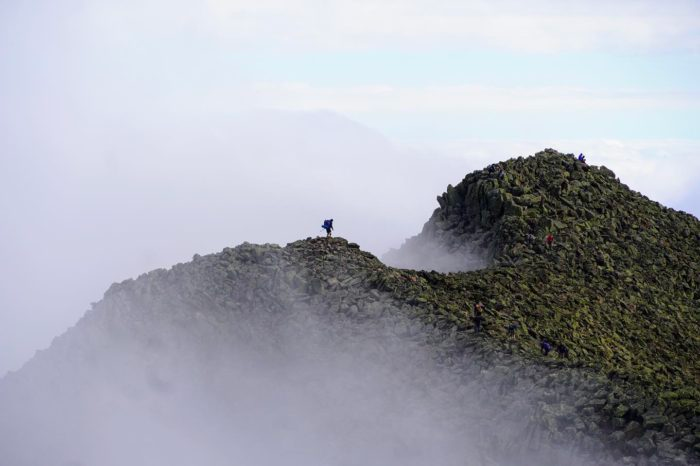
Knife Edge
Work Cited
Bratton, Susan. The Spirit of the Appalachian Trail : Community, Environment, and Belief on a Long-Distance Hiking Path. 1st ed., Knoxville, Tn, University Of Tennessee Press, 2012, pp. 25–41, ebookcentral.proquest.com/lib/montana/reader.action?docID=982548&ppg=46.
Chaplin, Susannah. “Maine Woman’s Ordeal Illustrates Dangers of Appalachian Trail Hike.” Www.proquest.com, Bangor Publishing Company, 18 Sept. 1993, www.proquest.com/docview/413724117/abstract/28497FBF1DCF4198PQ/1?accountid=28148. Accessed 4 Apr. 2023.
Chávez, Karen. “Appalachian Trail Nonprofit Responds to Killing: Redesigned Website Aims to Help Hikers Report Suspicious, Illegal Activity on Trail.” Www.proquest.com, Gannett Media Corp, 6 June 2019, www.proquest.com/newspapers/appalachian-trail-nonprofit-responds-killing/docview/2235510839/se-2. Accessed 4 Apr. 2023.
Floro, Kelly. “Why 75% of at Thru-Hikers Won’t Make It (Spoiler: It’s Complicated).” The Trek, 25 Oct. 2021, thetrek.co/appalachian-trail/why-75-of-at-thru-hikers-wont-make-it-spoits-complicated/. Accessed 11 Apr. 2023.
Lewis, Amy. “Appalachian Folklore, Monsters and Superstitions.” Blue Ridge Mountains Travel Guide, 18 Mar. 2022, blueridgemountainstravelguide.com/appalachian-folklore-and-superstitions/. Accessed 11 Apr. 2023.
Miller, Jason. “BackPacked Architecture: The Appalachian Trail and Its “Primitive Huts.”” Journal of Appalachian Studies, vol. 21, no. 2, 2015, p. 247, proxybz.lib.montana.edu/login?url=www.jstor.org/stable/10.5406/jappastud.21.2.0247, https://doi.org/10.5406/jappastud.21.2.0247. Accessed 23 April 2020.
Shaffer, Dennis. “Connecting Humans and Nature: The Appalachian Trail Landscape Conservation Initiative.” The George Wright Forum, vol. 33, no. 2, 2016, pp. 175–184, www.jstor.org/stable/44131250. Accessed 12 Apr. 2023.
Strange Outdoors. “Appalachian Trail — Mysterious Stories Blog.” Strangeoutdoors.com, 15 Nov. 2017, www.strangeoutdoors.com/mysterious-stories-blog/category/Appalachian+Trail. Accessed 11 Apr. 2023.
WBIR. “Appalachian Unsolved: The Lady in the Lake.” Www.youtube.com, 3 Mar. 2022, www.youtube.com/watch?v=cfJvWo7fpXE. Accessed 12 Apr. 2023.